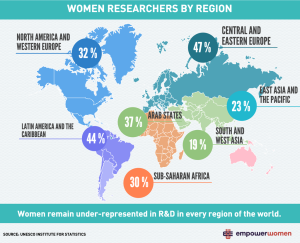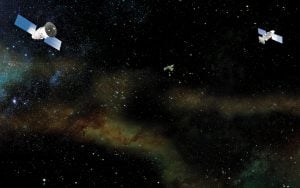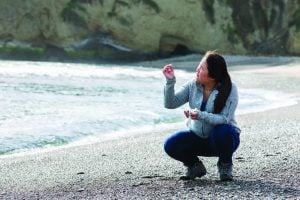
Science & Tech
UN declares International Day of Women in Science
From Roberta Bondar to Harriet Brooks, Canada has more than its fair share of women scientists to be proud of. However women are still a minority in the STEM fields
- 472 words
- 2 minutes
This article is over 5 years old and may contain outdated information.
Science & Tech

I am reminded that Ann Makosinski is only 15 years old when her father passes her the phone calling her by the affectionate nickname Toad.
Toad, derived from Ann’s favourite Wind in the Willows character, is described as intelligent and resourceful, but also as a narcissistic amphibian with the bad habit of reckless car racing.
Ann can’t legally drive, she is wickedly smart and despite her recent appearance on the podium of Google’s international science fair, there isn’t a narcissistic bone in her body.
As one of four winners of the Google Science Fair, the B.C. teen took home a $25,000 scholarship for her Hollow Flashlight invention. Her winning flashlight uses no batteries and instead generates power from the heat of the human hand.
I caught up with Ann to learn more about her invention and her advice for other teens interested in science.
Marika McKenzie: How does the heat from a human hand power a flashlight?
Ann Makosinski: To harvest this heat I used Peltier tiles. I had used these tiles in my previous science fair project in grade seven, so I knew what I was dealing with.
If you heat one side of these tiles and you cool the other, electricity will be produced. So in my case, I decided to heat one side of the tiles with the palm of my hand and cool the other with a hollow aluminum tube and the ambient air. The hollow aluminum tube allows for maximum air convection currents to flow through and around the tube and cool it even further.
MM: What inspired you to make the Hollow Flashlight?
AM: I got the idea for my project when I went to the Philippines — I am half Filipino — so I have visited there a few times. One of my friends there failed her grade because she simply didn’t have any light or electricity to study with.
Some of my other friends have similar problems as well, and when I visited India I noticed the same problem where people simply had no light, no electricity. So I thought about a way to solve this with some sort of energy source that’s always around. So I thought about harvesting human heat.
MM: Do you think that science should always strive to do something positive for the world?
AM: Yes. I think we should be trying to improve the world and the situation around us. I mean there are so many problems, some being fixed and some being ignored. I think we as a people and especially my generation will have to deal with all of these problems. We need to start trying to solve all these problems and making the world a better and a more comfortable place where all people can receive an education, shelter, food, just their basic needs. Anything is possible as long as you put mind to it, you put your heart into it and you believe in it.
MM: What advice do you have for other teens who want to make a difference with an invention or with the application of science?
AM: You need to stick with your idea, you need to stick with your project. No matter if you feel like giving up or you say, “Ah, this will never work.” You just need to keep on going because it will work out — the clouds will lift! You just have to keep going forward and have patience and perseverance. Those are the two things that I have had to develop as I’ve done these science fair projects.
You also need to choose something you’re interested in. Choose something you’re passionate about. There’s a difference between thinking and talking about it and actually getting down, sitting on the bench and creating your project.
MM: What advice would you give to girls interested in science and technology?
AM: Don’t be afraid. Don’t be afraid of the stereotype of the science geek. It’s okay to be a geek or a nerd. I’m helping to improve my situation around me and I’m interested in it and so it shouldn’t matter if you’re afraid of the people who will call you a geek or a nerd. Just brush that aside, you should be interested in whatever you are interested in and people should not stop you.
Are you passionate about Canadian geography?
You can support Canadian Geographic in 3 ways:

Science & Tech
From Roberta Bondar to Harriet Brooks, Canada has more than its fair share of women scientists to be proud of. However women are still a minority in the STEM fields

Science & Tech
As geotracking technology on our smartphones becomes ever more sophisticated, we’re just beginning to grasps its capabilities (and possible pitfalls)

Environment
Carbon capture is big business, but its challenges fly in the face of the need to lower emissions. Can we square the circle on this technological Wild West?

Science & Tech
Environmental entrepreneur Miranda Wang turns to science to seek profitable solutions to the problem of what to do with our mountains of plastic waste